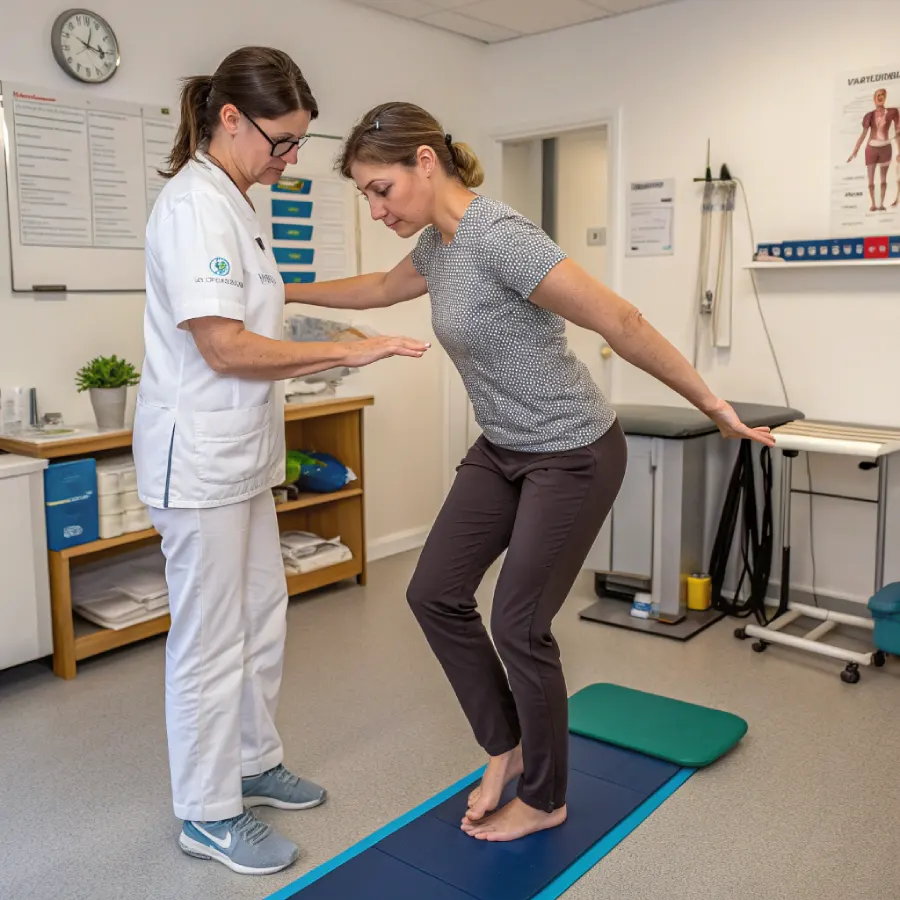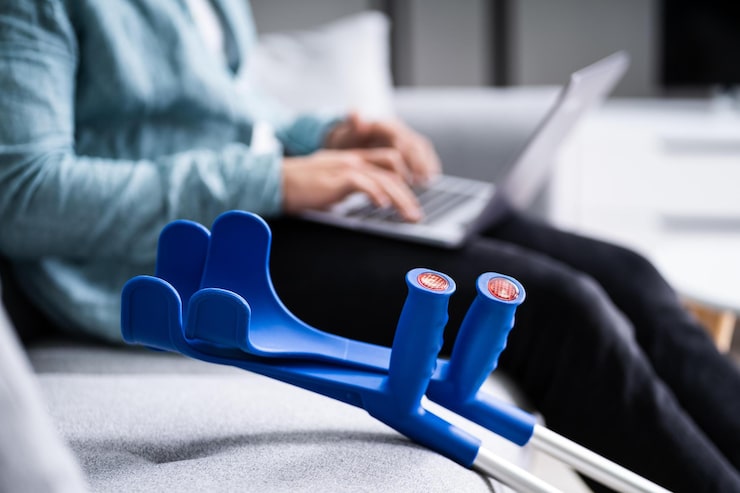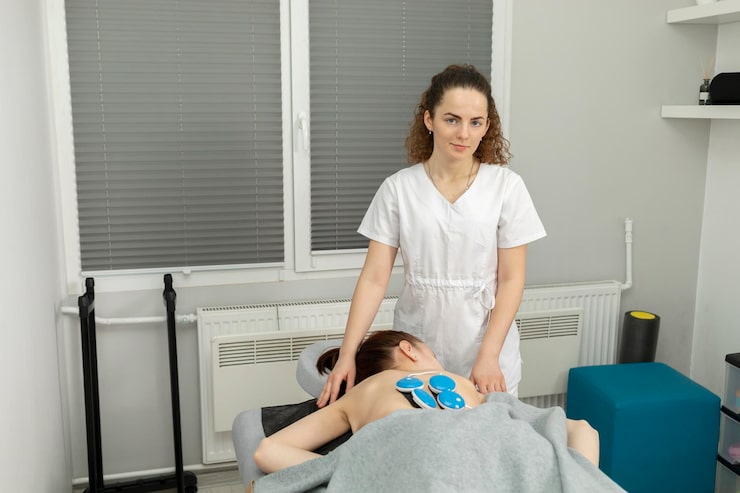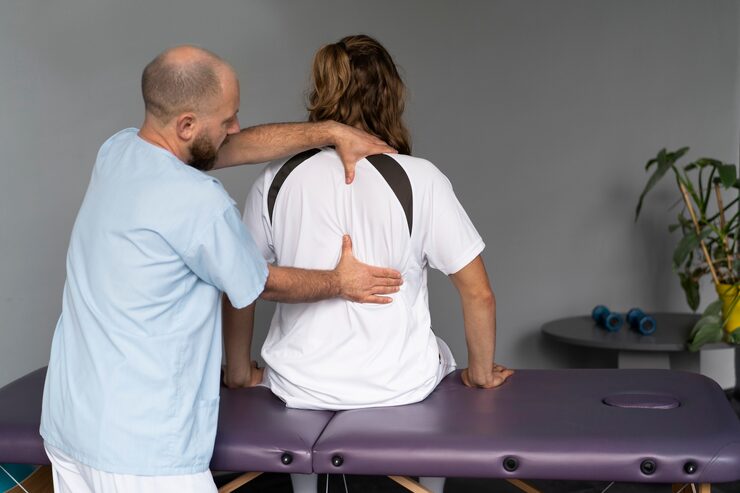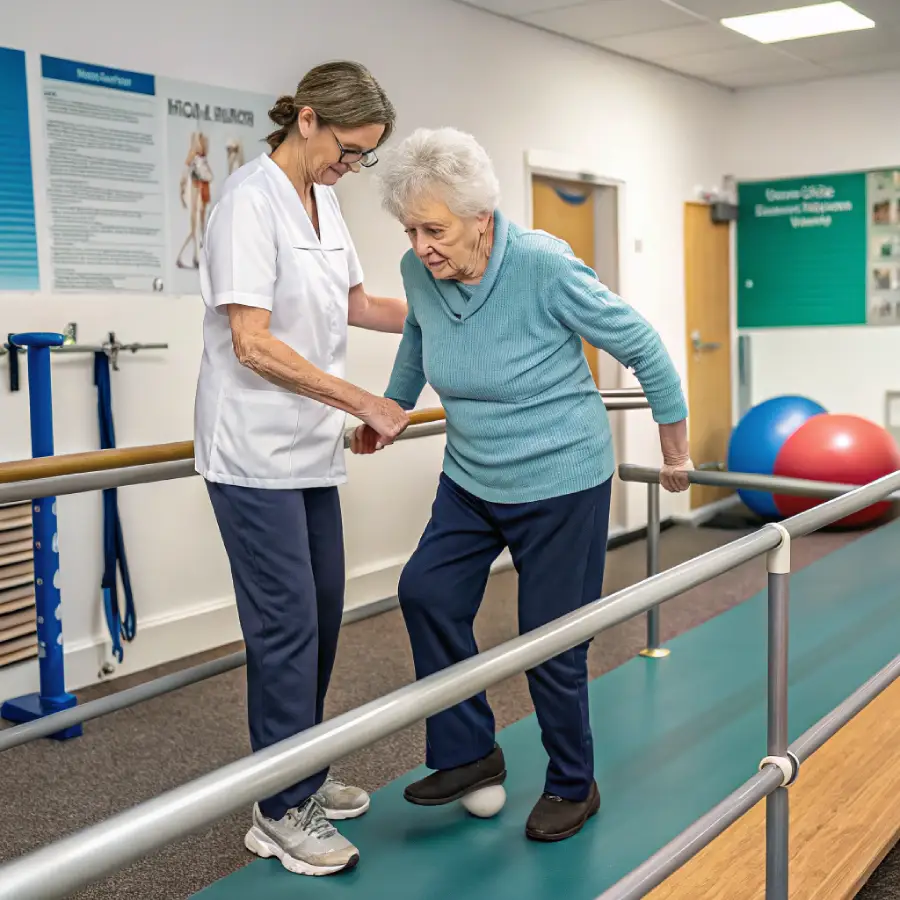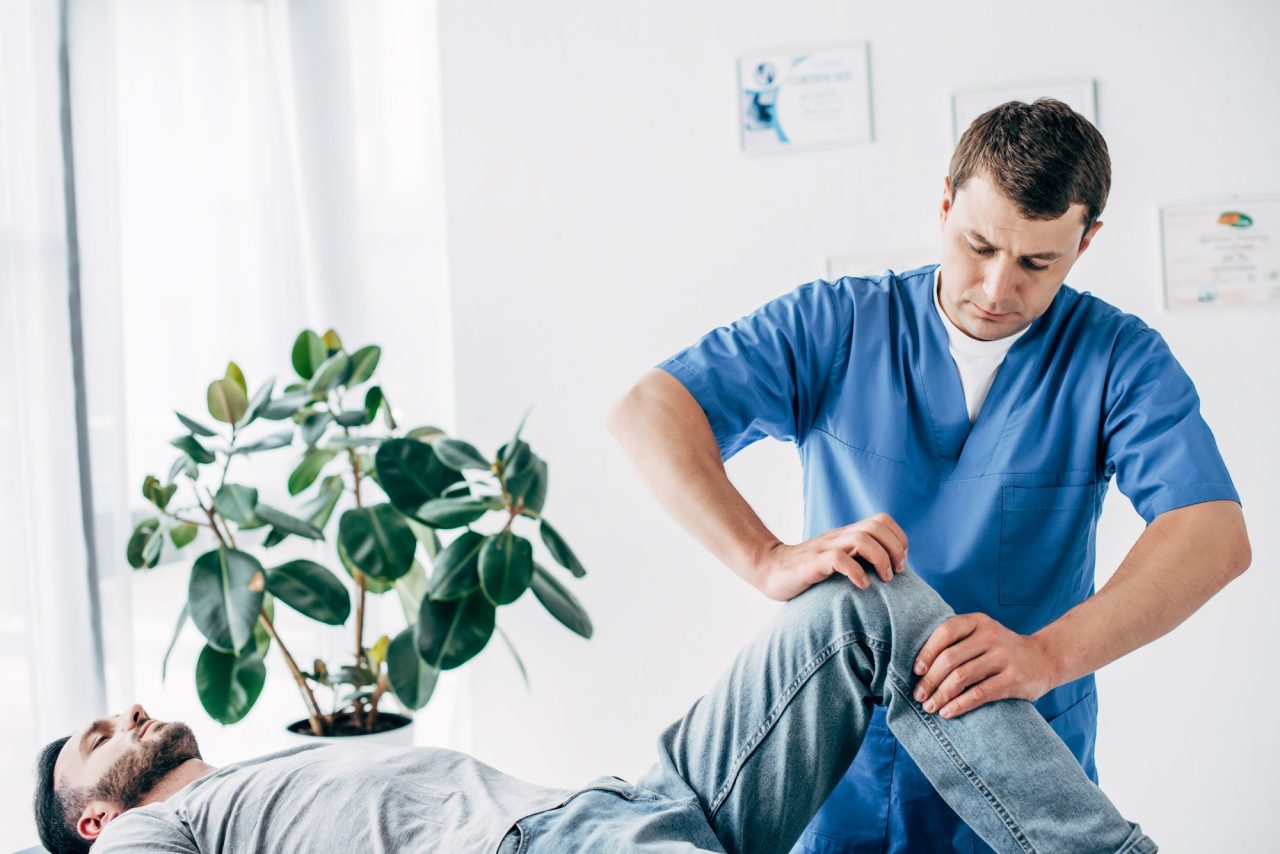Have you ever felt the room spin uncontrollably, making even standing feel like a challenge? Dizziness and vertigo affect over 30% of adults at some point, turning routine tasks into daunting obstacles. These symptoms often stem from vestibular issues, where the inner ear and brain struggle to maintain balance. Physiotherapy for dizziness and vestibular issues provides a non-invasive, evidence-based solution to restore stability and confidence.
This comprehensive guide explores the causes of dizziness, how physiotherapy offers targeted relief, and practical steps to manage symptoms effectively. Whether you’re dealing with occasional lightheadedness or chronic vertigo, understanding these approaches can transform your life. Keep reading to learn how physiotherapy can help you regain control and live without fear of falling.
Understanding Dizziness and Vestibular Issues
Dizziness isn’t just a momentary wobble—it’s a complex symptom tied to the vestibular system, your body’s balance hub. Located in the inner ear, this system coordinates with your brain, eyes, and muscles to keep you steady. When it malfunctions, you may experience vertigo (a spinning sensation), unsteadiness, or lightheadedness, disrupting daily activities like walking or driving.
Vestibular disorders, such as benign paroxysmal positional vertigo (BPPV), vestibular neuritis, and Ménière’s disease, are common causes. These conditions can arise from infections, head injuries, or aging, leading to symptoms like nausea, blurred vision, or anxiety about falling. Understanding these issues is the first step toward effective treatment, and physiotherapy offers a path to lasting relief.
Common Types of Vestibular Disorders
Several conditions contribute to dizziness, each with unique characteristics:
- Benign Paroxysmal Positional Vertigo (BPPV): Brief vertigo episodes triggered by head movements, caused by dislodged calcium crystals in the ear canals. It’s the most common vestibular disorder, affecting about 2.4% of people yearly.
- Vestibular Neuritis: Sudden, intense vertigo from viral inflammation of the vestibular nerve, often accompanied by nausea or vomiting.
- Ménière’s Disease: Recurrent vertigo, tinnitus, and hearing loss due to fluid buildup in the inner ear, impacting daily functioning.
- Labyrinthitis: Dizziness and hearing changes from bacterial or viral inner ear infections, often following a cold or flu.
Each disorder requires a tailored approach, which physiotherapy can provide through specialized techniques.
Explore physiotherapy in Scarborough for expert dizziness and vestibular care
Prevalence and Impact on Daily Life
Vestibular issues are widespread. About 15-20% of adults report dizziness annually, with vestibular vertigo accounting for roughly a quarter of cases. For older adults, the stakes are higher—dizziness increases fall risk by up to 12 times, leading to injuries, hospitalizations, and an estimated $50 billion in healthcare costs yearly in the U.S.
The impact extends beyond physical symptoms. Chronic dizziness can cause social isolation, reduced productivity, and depression. Many avoid activities like exercising or socializing due to fear of triggering symptoms, diminishing their quality of life. Early intervention through physiotherapy can prevent these outcomes, restoring independence and confidence.
Causes and Risk Factors
Vestibular problems stem from various sources. Inner ear disruptions, like displaced crystals in BPPV or inflammation in neuritis, are primary causes. Head trauma, such as concussions, can damage vestibular structures, while aging naturally weakens the system.
Other risk factors include:
- Migraines: About 40% of migraine sufferers experience vertigo or dizziness.
- Medications: Drugs like antihypertensives or sedatives may list dizziness as a side effect.
- Infections: Viral or bacterial infections can inflame the inner ear, triggering symptoms.
- Lifestyle Factors: Poor posture, dehydration, or lack of exercise can worsen balance issues.
Proactive steps, like regular health screenings or balance exercises, can reduce risks, especially for those with a family history of vestibular disorders.
| Vestibular Disorder | Primary Symptoms | Common Triggers |
|---|---|---|
| BPPV | Brief vertigo, nausea | Head movements, injury |
| Vestibular Neuritis | Severe vertigo, imbalance | Viral infections |
| Ménière’s Disease | Vertigo, tinnitus, hearing loss | Inner ear fluid buildup |
| Labyrinthitis | Dizziness, hearing changes | Infections |
Image Alt Text: Diagram of the inner ear highlighting vestibular system components
The Role of Physiotherapy in Treating Dizziness and Vestibular Issues
Physiotherapy for dizziness and vestibular issues is a cornerstone of treatment, offering a drug-free, evidence-based approach to restore balance. Through techniques like vestibular rehabilitation therapy (VRT), physiotherapists help the brain and body compensate for vestibular deficits. This tailored method is effective for conditions like BPPV, neuritis, and even central issues like post-stroke dizziness.
VRT promotes neuroplasticity, allowing the brain to adapt to faulty signals from the inner ear. It’s a proactive process that starts with a thorough assessment of balance, eye movements, and symptom triggers. By combining clinical interventions with at-home exercises, physiotherapy empowers patients to manage symptoms and prevent recurrence.
The benefits are clear: studies show VRT reduces vertigo in 80% of BPPV cases within a few sessions. Unlike temporary fixes, physiotherapy addresses root causes, offering sustainable relief and improved quality of life.
What is Vestibular Rehabilitation Therapy?
Vestibular rehabilitation therapy is a customized exercise program designed to alleviate dizziness, enhance balance, and stabilize vision during movement. It targets the vestibulo-ocular reflex (eye-head coordination) and overall body stability, addressing both acute and chronic symptoms.
A VRT plan typically includes:
- Initial Assessment: Tests like the Dix-Hallpike maneuver pinpoint specific issues, such as BPPV.
- Tailored Exercises: Movements to reposition ear crystals, desensitize vertigo triggers, or strengthen balance.
- Ongoing Monitoring: Regular check-ins to adjust the plan as symptoms improve.
VRT is not a one-size-fits-all solution. Acute cases may focus on quick maneuvers, while chronic conditions require gradual habituation to triggers, ensuring long-term success.
Physiotherapy vs. Other Treatments
Unlike medications that mask symptoms, physiotherapy targets underlying dysfunction without side effects like drowsiness. Surgery, used only in rare cases like severe Ménière’s disease, carries risks and lengthy recovery periods. In contrast, physiotherapy is non-invasive, accessible, and empowers patients to take an active role in recovery.
Physiotherapy also complements other therapies. For example, it pairs well with cognitive behavioral therapy for anxiety-related dizziness or dietary changes for Ménière’s disease management. Its versatility and effectiveness make it a preferred choice for many seeking lasting relief.
Key Physiotherapy Techniques for Vestibular Relief
Physiotherapists employ a range of techniques to combat dizziness and vestibular issues, each tailored to the patient’s condition. These include canalith repositioning maneuvers, gaze stabilization exercises, and balance training, all designed to reduce symptoms and enhance coordination. Consistency is vital, with daily practice recommended for optimal results.
Many exercises are simple and equipment-free, making them easy to integrate into daily routines after professional guidance. Below, we detail the core techniques and offer actionable tips for implementation.
Canalith Repositioning Maneuvers
For BPPV, canalith repositioning maneuvers like the Epley or Semont are highly effective. These involve guided head movements to shift displaced ear crystals back to their proper place, often resolving vertigo in one session. Success rates exceed 80%, with many patients experiencing immediate relief.
- How to Perform (Under Guidance): A therapist tilts the head through specific angles, holding each position for 20-30 seconds.
- At-Home Tip: After instruction, some patients learn self-maneuvers for maintenance, but professional supervision is crucial initially.
- Precaution: Avoid abrupt head movements post-treatment to prevent recurrence.
These maneuvers are quick, targeted, and ideal for BPPV management.
Gaze Stabilization Exercises
Gaze stabilization exercises strengthen the vestibulo-ocular reflex, helping maintain clear vision during head movements. These are essential for tasks like reading or navigating busy environments.
- Basic Exercise: Fix your gaze on a stationary target (e.g., a letter on a wall) while turning your head side to side slowly, 10-15 times per session.
- Progression: Increase speed or try vertical nods as tolerance improves.
- Tip: Start with short sessions to avoid nausea, gradually extending duration.
Regular practice reduces dizziness and enhances activities like driving or sports.
Balance and Habituation Training
Balance training improves coordination, while habituation exercises desensitize the brain to vertigo triggers. These are particularly beneficial for chronic conditions or post-injury recovery.
- Balance Drills: Stand on one leg for 30 seconds, progressing to eyes-closed versions or uneven surfaces like foam pads.
- Habituation Exercises: Repeatedly perform movements that trigger mild dizziness (e.g., turning in a chair) to reduce sensitivity over time.
- Safety Tip: Practice near a stable surface to prevent falls, especially for beginners.
These exercises build confidence and reduce fall risks, particularly for older adults.
Benefits of Physiotherapy for Dizziness and Vestibular Issues
Physiotherapy offers transformative benefits, from symptom relief to enhanced quality of life. By addressing the root causes of vestibular dysfunction, it restores independence and reduces the fear of falling. Patients often report significant improvements within weeks, making it a game-changer for daily functioning.
Beyond physical gains, physiotherapy supports mental health by alleviating anxiety and isolation tied to chronic dizziness. It also promotes overall wellness by integrating strength and flexibility work, benefiting those with co-existing conditions like arthritis or back pain.
Improved Daily Functioning and Confidence
Physiotherapy helps patients resume normal activities with ease. Tasks like climbing stairs, shopping, or socializing become manageable again, boosting confidence.
- Real-Life Impact: Patients report returning to hobbies like hiking or gardening without fear of vertigo.
- Mental Health Benefits: Reduced dizziness lowers anxiety, improving mood and social engagement.
- Example: A 55-year-old patient regained the ability to drive after weeks of VRT, transforming her daily routine.
These improvements enhance independence and overall well-being.
Reduced Fall Risk and Enhanced Safety
Dizziness significantly increases fall risk, especially for older adults. Physiotherapy’s focus on balance training is critical for prevention.
- Statistics: Balance exercises can reduce fall risk by up to 50% in high-risk groups.
- Practical Benefit: Improved coordination allows safer navigation of uneven surfaces or crowded spaces.
- Long-Term Impact: Fewer falls mean fewer injuries and lower healthcare costs.
This makes physiotherapy a vital tool for aging populations or those recovering from injuries.
Long-Term Health and Cost Savings
Physiotherapy reduces reliance on medications and prevents complications like fractures from falls. Studies show it lowers healthcare costs by up to 30% for vestibular patients by reducing emergency visits.
- Holistic Wellness: Exercises improve overall strength and flexibility, supporting general health.
- Sustainability: Home exercises empower patients to maintain results independently.
- Economic Benefit: Fewer medical interventions save money and time.
Conclusion
Physiotherapy for dizziness and vestibular issues offers a transformative solution to regain balance and confidence. Through targeted techniques like canalith repositioning, gaze stabilization, and balance training, it addresses the root causes of vertigo and imbalance, delivering lasting relief. Whether managing BPPV, vestibular neuritis, or Ménière’s disease, this approach enhances daily functioning, reduces fall risks, and promotes overall wellness. Don’t let dizziness limit your life. Connect with a vestibular rehabilitation specialist today to start your path to stability. Ready to take control? Schedule a consultation now and embrace a steadier, more vibrant future.
Frequently Asked Questions About Physiotherapy for Vestibular Issues
What Causes Dizziness and Vertigo?
Dizziness and vertigo stem from vestibular system disruptions, often due to inner ear issues like BPPV, infections, or fluid buildup. Other causes include migraines, head injuries, or medications. A physiotherapist can assess the root cause and design a targeted plan.
How Long Does Vestibular Rehabilitation Take?
Results vary by condition. BPPV may improve in 1-2 sessions, while chronic issues like Ménière’s disease require weeks to months. Consistency with exercises is key to faster recovery.
Can I Do Vestibular Exercises at Home?
Yes, after professional guidance. Physiotherapists teach safe home exercises, like gaze stabilization or balance drills, to maintain progress. Always consult a professional before starting to avoid worsening symptoms.
Is Physiotherapy Safe for All Ages?
Physiotherapy is generally safe for all ages, with plans tailored to individual needs. Older adults benefit significantly from fall-prevention exercises, while younger patients recover from injuries or infections. A thorough assessment ensures safety and effectiveness.

